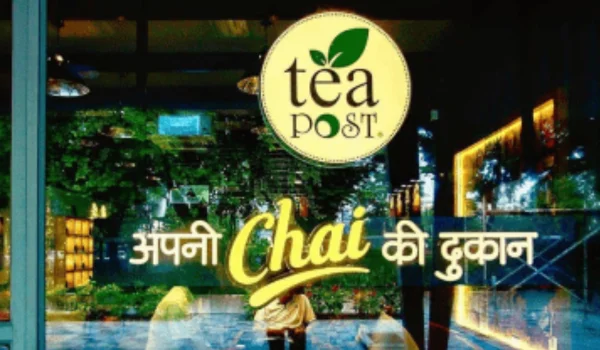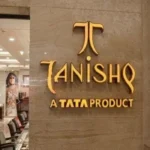Launched in 2007 in Ahmedabad by Darshan Dashani, Tea Post has grown to over 250 outlets in 50+ cities, rapidly expanding its presence since franchising began in 2013. As a modern tea café with kiosk and sit-down formats, it offers a niche in India’s booming tea café market.
Here’s a comprehensive breakdown of the investment, returns, requirements, pros & cons, plus application steps.
💸 Investment Breakdown
You can open two models—a kiosk (100–400 sq ft) or a café (1,000–1,500 sq ft; sit‑down/quick-service). Initial investment varies accordingly:
| Expense Category | Typical Range (INR) |
|---|---|
| Franchise Fee | ₹2 L–5 L |
| Interiors & Setup | ₹5–10 L (café up to ₹30–40 L) |
| Equipment & Machinery | ₹2 L (plus inventory) |
| Initial Inventory | ₹2–4 L |
| Working Capital | ₹3–5 L |
| Marketing & Launch | ₹1 L |
| Miscellaneous (licenses, etc.) | ₹1–2 L |
| Total Investment | ₹15–20 L kiosk; ₹30–45 L café |
- Kiosk format typically costs ₹15–20 L with basic branding and equipment.
- Café format may go up to ₹30–45 L, depending on size and setup quality.
🧭 Franchise Model & Fee Structure

Tea Post operates a FOFO (Franchise-Owned, Franchise-Operated) structure with:
- Franchise Fee: ₹2–5 L one-time.
- Royalty/Commission: 5–8% of monthly sales.
- Revenue Share: Franchisee retains 90–100%; brand takes 1–10%.
- Agreement Tenure: Typically 3–5 years, renewable.
Space Requirement:
- Kiosk: 100–400 sq ft.
- Café: 1,000–1,500 sq ft.
Tea Post supports menu planning, kitchen training, marketing, and POS setup.
📈 Profitability & ROI
Franchise profitability depends on location, size, and execution:
Net Margin:
- Best reports show 50% profit margin .
- Conservative estimates: 25–30%.
Revenue Share: Franchisee keeps 90–100%, royalty capped at ~10% .
Payback & ROI:
- Café format breakeven in 18–24 months.
- ROI typically achieved in 1–3 years .
Example: A café with ₹3 L monthly sales at 30% margin earns ₹90k/month—covering setup costs in ~18 months.
✅ Eligibility Criteria
Ideal franchise candidates should meet these conditions:
- Investment Funds: ₹15–20 L for kiosk; ₹30–45 L or more for café.
- Space: 100–400 sq ft kiosk or 1,000–1,500 sq ft café in high footfall zones .
- Business Aptitude: Passion for F&B, customer service, ops management.
- Licenses: GST, FSSAI, fire/trade licenses.
- Staffing: Kiosk needs 2–3, cafés require 3–10 employees.
- Age & Education: Prefer age 21+, with relevant business or F&B background.
🛠 Support & Onboarding
Tea Post offers:
- Training: Setup procedures, tea brewing, inventory practices.
- Branding support: Menu templates, store layout, equipment setup.
- Marketing aid: Local and digital advertising in select formats.
- Operational support: Ongoing guidance via RMs and SOP manuals.
- Setup to launch typically takes ~30 days.
⚖️ Pros & Cons
✅ Advantages
- Strong brand with pan-India presence.
- High margins—potentially 50% in optimal setups.
- Two scalable formats catering to kiosk/café preferences.
- Structured brand support and SOPs.
❌ Challenges
- High upfront setup costs for cafés.
- Profit margins heavily location-dependent, requiring 300+ cups daily.
- Royalty and commission may shrink margins if revenue underperforms.
- Operational consistency and staff management demand discipline.
- Reddit cautions on typical café risks:
“Franchise isn’t a moat… you need serious cash to prop up and burn through profitability”.
📝 How to Apply
- Visit the official franchise page on Tea Post’s website.
- Fill out enquiry form: Provide location, space details, investment capacity.
- Preliminary evaluation by Tea Post team.
- Site visit & feasibility check.
- Agreement signing: 3–5 years term.
- Initial payments: Franchise fee + deposit.
- Setup & training: Interiors, equipment, kitchen training.
- Soft launch & grand opening: Kickstart with promotions.
- Ongoing support: Operational audits, menu updates, marketing.
✅ Final Verdict
A Tea Post franchise—especially the kiosk model—offers an affordable entry into branded F&B, with ₹15–20 L investment, structured support, and strong margin potential. Café formats demand more capital but can deliver higher returns if managed well.
Key success drivers include choosing an ideal location, enforcing SOPs, and maintaining high footfall. Profitability depends on selling 200–300 cups/day or equivalent café volume.
If you need help choosing between a kiosk vs café, preparing financial projections, or optimizing P&L in Delhi/NCR, I’m here to support. Let me guide you through every step!

Shashi Kant is the Founder and Editor of BusinessScroller.com, a leading platform for business insights, finance trends, and industry analysis. With a passion for journalism and expertise in business reporting, he curates well-researched content on market strategies, startups, and corporate success stories. His vision is to provide valuable information that empowers entrepreneurs and professionals. Under his leadership, BusinessScroller.com has grown into a trusted source for in-depth articles, customer care guides, and financial expertise.


